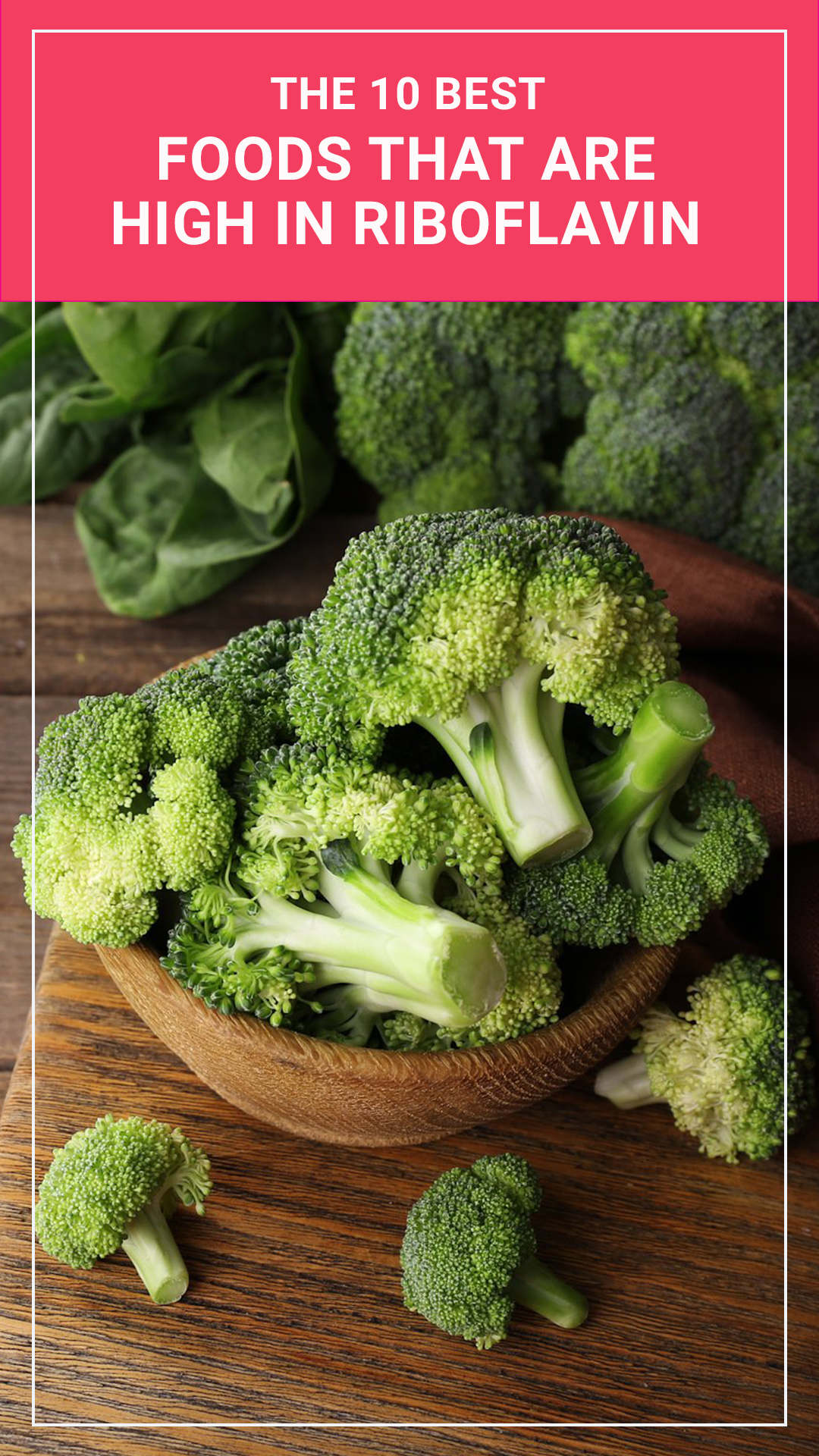
Important: This article is for informational purposes only. Please read our full disclaimer for more details.
Riboflavin, also known as vitamin B2, is a water-soluble vitamin that is part of the vitamin B complex. It can be found in many foods, including meat, eggs, dairy, legumes, mushrooms, and leafy greens. Riboflavin is important for growth and red blood cell production. It also helps convert food into energy and plays a role in antioxidant activity.
Getting enough riboflavin is important for overall health.
10 Foods That Are High in Riboflavin
1. Milk

Milk is an excellent source of riboflavin. One cup (244 grams) of whole milk contains 0.55 milligrams of riboflavin, or 32% of the Reference Daily Intake (RDI) (). This amounts to over half of the daily recommended intake for adults.
2. Yogurt

Yogurt is another dairy product that’s rich in riboflavin. One cup (245 grams) of plain, low-fat yogurt provides 0.4 milligrams of riboflavin, or 23% of the RDI (). Greek yogurt, a type of strained yogurt with a thicker consistency, contains even more riboflavin.
3. Eggs
Eggs are a nutrient-rich food and an excellent source of riboflavin. One large egg contains 0.3 milligrams of riboflavin, or 17% of the RDI (). Eggs are also a good source of other vitamins and minerals, such as vitamin D, selenium, and choline.
[ Read: Top 10 Vitamin D Rich Foods ]
4. Meat
Meat is another excellent source of riboflavin. Beef, pork, lamb, and chicken all contain high amounts of this nutrient. For example, 3 ounces (85 grams) of cooked beef liver provides 1.1 milligrams of riboflavin — that’s over 60% of the RDI ().
5. Wild-caught Salmon
Wild-caught salmon is a good source of riboflavin. Three ounces (85 grams) of cooked, wild-caught salmon contains 0.3 milligrams of riboflavin, or 17% of the RDI (). Salmon is also an excellent source of other nutrients, such as omega-3 fatty acids and protein.
6. Mushrooms
Mushrooms are a good plant-based source of riboflavin. One cup (96 grams) of raw mushrooms contains 0.2 milligrams of riboflavin, or 12% of the RDI (). Mushrooms are also a good source of other vitamins and minerals, including copper and selenium.
7. Spinach
Spinach is a nutrient-rich leafy green that’s high in riboflavin. One cup (180 grams) of cooked spinach contains 0.2 milligrams of riboflavin, or 11% of the RDI (). Spinach is also a good source of other vitamins and minerals, such as iron and magnesium.
8. Broccoli
Broccoli is another leafy green that’s high in riboflavin. One cup (156 grams) of cooked broccoli provides 0.2 milligrams of riboflavin, or 11% of the RDI (). Broccoli is also a good source of other nutrients, including vitamin C and potassium.
[ Read: 5 Health Benefits of Broccoli For Babies ]
9. Beans and Legumes
Beans and legumes are a good plant-based source of riboflavin. One cup (172 grams) of cooked navy beans contains 0.4 milligrams of riboflavin, or 23% of the RDI (). Other beans and legumes, such as lentils and chickpeas, are also good sources of this nutrient.
10. Fortified Cereal
Many breakfast cereals are fortified with vitamins and minerals, including riboflavin. One cup (30 grams) of fortified cereal can provide up to 0.6 milligrams of riboflavin, or 35% of the RDI (). Be sure to check the nutrition label to see how much riboflavin is in a serving of cereal.
Riboflavin is an important water-soluble vitamin that plays a role in growth, energy production, and antioxidant activity. Getting enough riboflavin is important for overall health. Milk, yogurt, eggs, meat, wild-caught salmon, mushrooms, spinach, broccoli, and beans are all excellent sources of this nutrient.
You Might Also Like:
- 10 Foods That Are High in Niacin
- 10 Foods That Are High in Melatonin
- How to Take Yogurt for Weight Loss
- Top 10 Foods High in Vitamin B
- Top 10 Potassium Rich Foods
- How to Use Spinach for Weight Loss?
- 10 Foods Are High in Glucosamine
- 15 Best Foods to Boost Your Metabolism
- 10 Healthy Foods That Are High in Phosphorus
- 25 Best Foods to Eat to Lose Weight Easily
- 10 Foods High in Probiotics for Better Gut Health
















